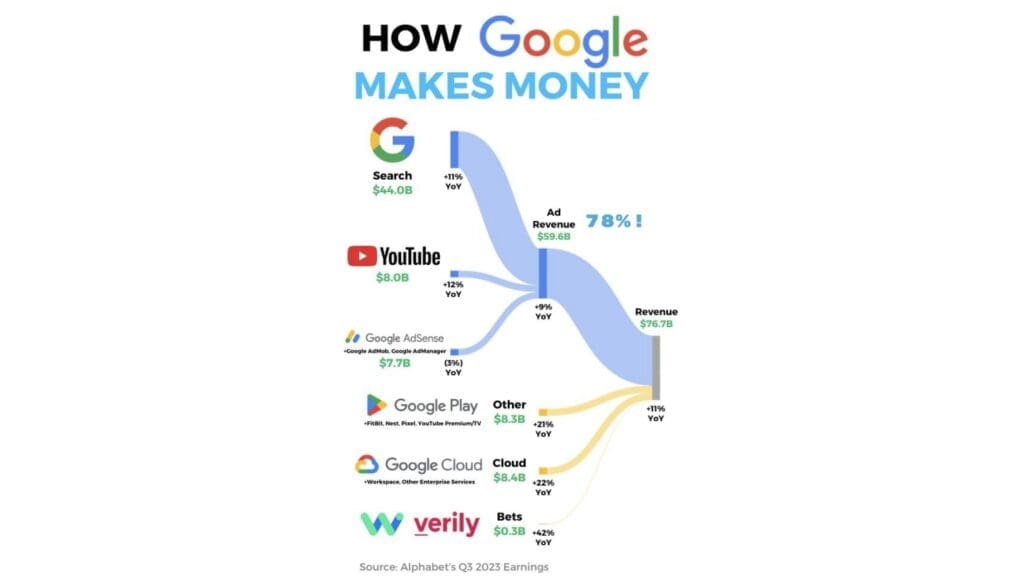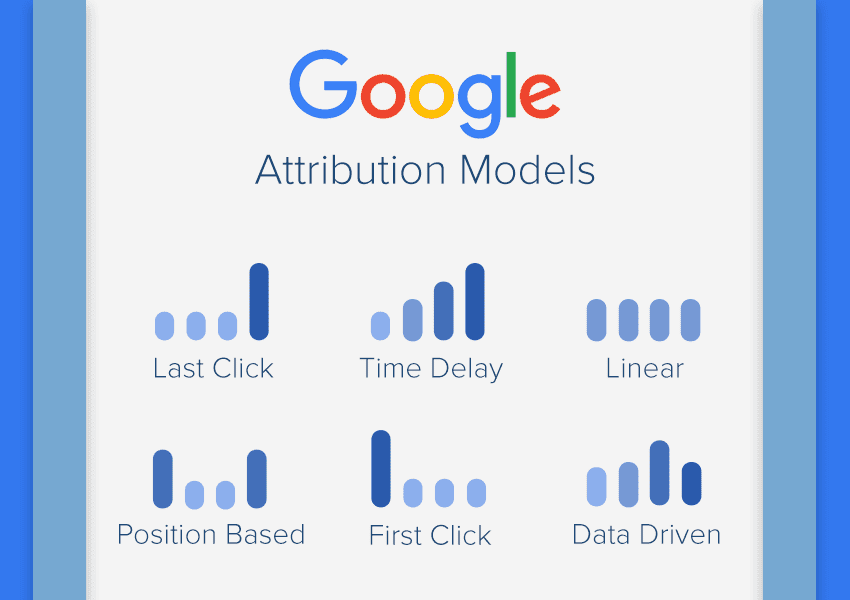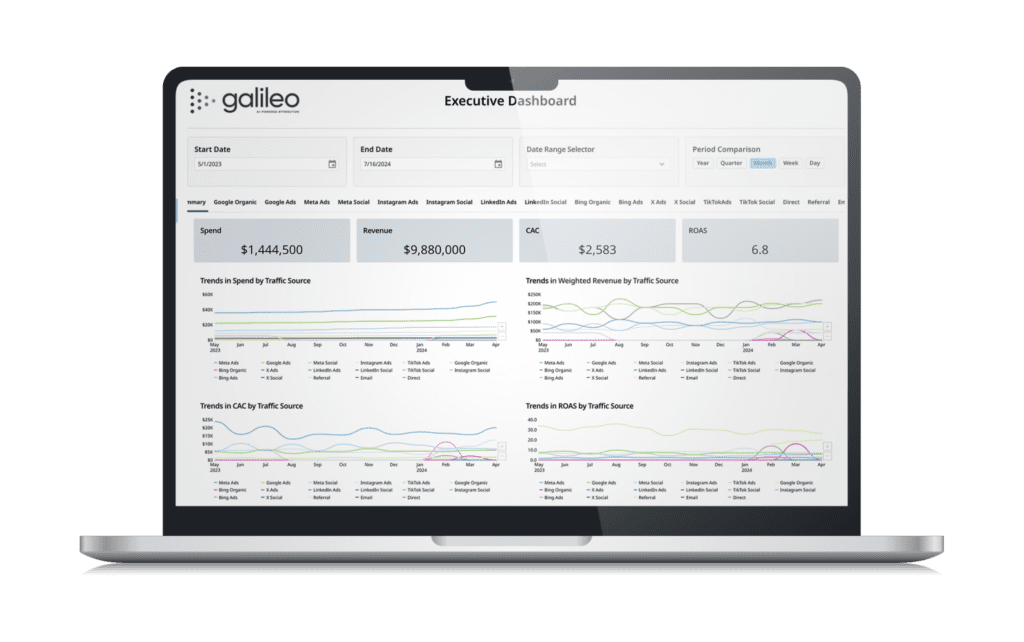Inside the Reality of Google’s “Free” Analytics

Why Independent Attribution Is Essential for Accurate Customer Insights
Imagine a sunny afternoon, and you come across a lemonade stand. A cheerful kid offers you a cup of lemonade for free. Larry David might quip, “What’s the catch!? What kind of lemonade is free? I don’t want your free lemonade!” The skepticism isn’t about the drink itself; it’s about the hidden costs that come with something that seems too good to be true.
Similarly, Google Analytics is a free tool for digital marketers, promising advanced tracking and insights into user behavior. However, as businesses have found, this “free” offer comes with significant limitations—limitations that can cost them dearly in terms of data accuracy, transparency, and ultimately, revenue. Because when something is free, your data IS the product.
Just as you wouldn’t want to sip on questionable lemonade, businesses should be wary of relying solely on Google, or any walled garden’s reporting, for their marketing analytics. In this article, we’ll explore the shortcomings of Google Analytics (GA4) and why independent attribution platforms like Galileo are essential for achieving accurate customer insights.
Google Analytics and GA4
Google Analytics has been a critical tool for digital marketers for years, providing essential insights into web traffic, user behavior, and campaign performance. And, while it was a staple for many years, with the release of Google Analytics 4 (GA4), Google promised a new era of data-driven marketing. GA4 was designed to offer more sophisticated tracking, the capability for advanced machine learning, and a greater focus on user privacy. At first glance, these features seem to address many of the challenges faced by marketers in today’s complex digital landscape.
However, as businesses dive deeper into GA4, they are discovering significant limitations that raise questions about its effectiveness as a comprehensive attribution tool for their own businesses. These limitations are not just technical hurdles; they are rooted in the very nature of Google’s business model—a model that prioritizes Google’s own profits and data control over the needs of businesses seeking true transparency and actionable insights.

I. The Evolution of Google Analytics – A Mixed Bag of Progress
Google Analytics has evolved considerably since its inception, moving from basic website tracking to a more complex platform capable of multi-channel attribution. The transition from Universal Analytics to GA4 represents Google’s response to changes in consumer behavior and increasing privacy concerns. GA4’s event-based tracking model, which replaces the session-based approach of Universal Analytics, is a significant shift intended to capture a more holistic view of user interactions across devices and platforms.
Yet, this evolution has come with trade-offs. GA4’s reliance on machine learning for insights is a double-edged sword. While it can provide predictive analytics and more nuanced reporting, it also obscures many of the underlying data points that marketers have traditionally relied upon. This obscuration isn’t accidental—it’s a strategic choice by Google that allows the company to maintain tight control over the data ecosystem.

Why Google Shares Only Sparing Information
Google’s approach to data sharing is deeply tied to its business model, which generated $305 billion in 2023, with more than 80% of this revenue coming from advertising. By controlling the data flow, Google ensures that businesses remain dependent on its ecosystem for insights. However, the information GA4 provides businesses is enough to keep them engaged but falls short of offering the full transparency needed for truly independent decision-making.
This selective data sharing benefits Google in multiple ways. It keeps advertisers within the Google ecosystem, ensures that the data remains valuable to Google’s own algorithmic improvements, and prevents businesses from gaining enough autonomy to consider alternative platforms. Essentially, GA4 gives businesses the tools to measure their efforts, but only within the framework that benefits Google’s overarching business objectives.
Google’s control over data is also reflected in how it shapes its ad platform, Google Ads, which generated $237 billion in revenue in 2023. This platform thrives on the data collected through tools like GA4, enabling Google to enhance ad targeting algorithms. However, while these improvements make Google Ads more effective (and lucrative for Google), businesses are often left with a partial view of their campaign effectiveness, making it difficult to optimize spending without relying heavily on Google’s tools.

II. The Strategic Limitations of GA4’s Attribution Model
One of the most critical limitations of GA4 is its constrained attribution window. GA4 allows for a maximum of a 90-day attribution window, which is particularly limiting for industries with longer sales cycles, such as B2B, real estate, or automotive. This limitation is not just a technical shortfall; it reflects Google’s broader strategy of simplifying complex customer journeys to fit within a manageable timeframe that feeds data back into its advertising model.
Impact on Businesses
The 90-day window forces businesses to evaluate their marketing performance within a narrow timeframe, often missing out on the long-tail effects of their campaigns. For example, companies with longer sales cycles may find that significant customer interactions are excluded from the attribution model, leading to an inaccurate picture of campaign effectiveness. This not only skews data but can also mislead businesses into investing in the wrong channels, believing they are more effective than they actually are.
Google’s insistence on a 90-day window also ties back to its focus on short-term ad effectiveness, which drives higher ad spending in the short term. Businesses may feel pressured to reallocate their budgets quickly based on this limited view, potentially leading to suboptimal decisions that favor Google Ads’ bottom line rather than the long-term success of the business.
Case Example: Consider a B2B software company that typically sees conversions occurring over a 6-12 month period. With GA4’s 90-day window, the company may only capture the final touch points of a sale, such as a whitepaper download or a product demo request, missing out on the critical earlier interactions like initial consultations or long-term content engagement. This limitation can lead the company to incorrectly attribute success to later-stage interactions while underestimating the importance of the earlier stages in nurturing a lead.

III. Google's Data Control and Its Impact on Businesses
Google’s ability to shape its own algorithms is one of the most powerful, yet often overlooked, aspects of its business model. Every interaction tracked through GA4 feeds back into Google’s vast data ecosystem, allowing the company to continuously refine its ad targeting algorithms. This feedback loop benefits Google by enhancing the precision of its advertising platform, making ads more effective and, therefore, more expensive for businesses. However, the businesses themselves do not have access to the same level of insight or control over their data.
Why GA4 Is Free (and What It Costs You)
GA4 is offered to the world for “free”. However, this liberty comes at a cost—right? Your data. By using GA4, businesses are providing Google with valuable user behavior data that is then used to improve Google’s ad products. This data, while beneficial to Google, is not ever fully accessible or transparent to the businesses generating it. Instead, we receive a limited view, tailored to keep us reliant on Google’s platforms and ecosystem.
The Hidden Costs
This dependency has significant financial implications. Companies that rely exclusively on GA4 may find themselves missing critical insights that could inform better decision-making. The cost of this missing data is often seen in the form of wasted ad spend, missed opportunities for optimization, and a lack of understanding of the true customer journey.
In 2023, businesses spent over $237 billion on Google Ads, much of which was influenced by the data insights—for Google—provided by GA4. However, what did we get? Without full visibility into the entire customer journey, businesses are often making decisions based on incomplete data. This leads to inefficient ad spending and missed opportunities to optimize campaigns, ultimately costing companies millions in potential revenue.
Strategic Downsides
Furthermore, by keeping businesses dependent on its tools, Google limits the ability of companies to fully integrate their marketing data with other platforms, such as CRM systems or third-party attribution tools. This prevents businesses from gaining a holistic view of their marketing performance, which is essential for accurately calculating Return on Ad Spend (ROAS) and Customer Acquisition Cost (CAC). The result is a skewed perspective that can undermine long-term growth and profitability.
For example, a mid-sized retailer might find that their Google Ads campaigns are performing well according to GA4 metrics, leading them to increase their ad spend. However, without full access to all relevant data—such as detailed customer journeys that include non-Google touch points—this retailer may be overestimating the effectiveness of these ads. In reality, much of their conversions could be the result of organic search, direct traffic, or even offline interactions, which GA4 might not fully account for. This skewed data keeps the retailer dependent on Google Ads, reinforcing Google’s revenue model at the expense of the retailer’s broader marketing strategy.
IV. The Common Thread: Platform-Centric Views
The biases in HubSpot, Salesforce, and GA4 all stem from a common issue: platform-centricity. Each of these tools is designed to showcase the value of its own ecosystem, which can lead to:
- Overvaluation of Platform-Specific Interactions: Activities that occur within the platform are often given more weight or visibility in analytics and attribution models.
- Data Silos: Despite integration capabilities, these platforms may struggle to provide a truly holistic view of cross-platform customer interactions.
- Tool-Specific Metrics: Each platform has its own set of metrics and KPIs, which may not align perfectly with a business’s overall goals or provide a standardized view across all marketing and sales efforts.
The Need for Platform-Agnostic Attribution
To overcome these biases, businesses need to consider platform-agnostic attribution solutions. These solutions offer several advantages:
- Holistic View: By integrating data from multiple sources without favoring any single platform, businesses can gain a more accurate picture of their entire marketing and sales ecosystem.
- Customizable Attribution Models: Platform-agnostic solutions often offer more flexibility in creating attribution models that truly reflect a business’s unique customer journey.
- Reduced Data Silos: These solutions are designed to break down data silos, providing a unified view of customer interactions across all touch points.
- Objective Performance Measurement: Without the inherent bias towards any single platform, businesses can more objectively measure the performance of their various marketing and sales efforts.
By recognizing and addressing the biases inherent in walled garden platforms like GA4, HubSpot, and Salesforce, businesses can make more informed decisions about their marketing attribution strategies. The key is to seek out solutions that provide a comprehensive, unbiased view of the entire customer journey, regardless of where those interactions take place.
Data-Driven Insights
According to a recent Forrester report, businesses that leverage advanced multi-touch attribution models see an average 30% increase in their marketing ROI compared to those relying on single-touch models like last-click attribution. This highlights the importance of understanding the entire customer journey rather than just the final interaction before a conversion.
In fact, Gartner has noted that companies using more comprehensive attribution platforms are not only improving ROI but also enhancing their customer retention rates by up to 15%. This is because these platforms provide a more nuanced view of customer behavior, allowing businesses to tailor their marketing strategies more effectively.
Furthermore, a study by eMarketer found that businesses with access to full data transparency across all marketing channels are 30% more likely to exceed their revenue goals. This underscores the value of a platform that doesn’t limit visibility into the data, enabling more informed and strategic decision-making.

V. The Advantage of Independent Attribution Platforms
Given the limitations of GA4, many businesses are turning to independent attribution platforms to fill the gaps. Platforms like Galileo offer several advantages that GA4 does not, particularly in terms of data transparency, unlimited attribution windows, and the ability to close loop to revenue by integrating with other systems like CRM and Point of Sale (POS). In fact, “how can Google deliver on its promise of attribution, if it doesn’t connect to these?” Great question.
Before and After: A B2B Company’s Journey from GA4 to Galileo
Consider TechBridge Solutions, a B2B technology provider specializing in cloud infrastructure services. TechBridge initially relied on GA4 for its marketing analytics, focusing on a mix of paid search, organic content, and earned media. Despite diligent efforts to optimize their campaigns, TechBridge struggled to gain a clear picture of their marketing performance, particularly due to GA4’s limitations.
Before: Using GA4 With GA4, TechBridge faced significant challenges in accurately attributing conversions to their marketing efforts. The 90-day attribution window was a major limitation, as their typical sales cycle stretched over 6-9 months. As a result, many critical touch points—like initial consultations, early-stage content downloads, and follow-up communications—were not captured within GA4’s narrow timeframe.
For example, TechBridge ran a paid search campaign that generated a spike in initial inquiries. However, because these inquiries often took months to convert into actual sales, GA4’s attribution model only recognized the final touch points, such as a product demo request that occurred within the last 30 days. This led TechBridge to mistakenly attribute most of the credit to the final stages of their campaigns, while undervaluing the earlier efforts that were essential in nurturing these leads.
TechBridge also found that GA4’s integration with their CRM was inadequate. Key customer data points—like the length of time from initial contact to closing a sale, or the influence of multiple touch points—were lost in GA4’s aggregated reporting. The result? A skewed view of their marketing ROI, with over 30% of their paid search budget being allocated to what they believed were high-performing keywords. However, deeper analysis revealed that many of these conversions were already primed by earlier organic and earned media interactions, which GA4 failed to properly attribute.
After: Transitioning to Galileo Recognizing the limitations of GA4, TechBridge made the switch to Galileo, seeking a more comprehensive view of their marketing performance. The results were transformative.
With Galileo, TechBridge was able to extend their attribution window beyond the restrictive 90-day period, allowing them to capture every significant touchpoint throughout their lengthy sales cycle. This broader view revealed that many conversions were influenced by content interactions that occurred 4-6 months before the final sale. For example, a white paper download that took place five months before closing was now accurately credited as a key touchpoint, leading TechBridge to reallocate resources towards their content marketing efforts.
Galileo’s explicit multi-touch attribution model also provided a more nuanced understanding of how different channels worked together. Paid search, organic content, and earned media were no longer analyzed in silos. Instead, Galileo showed that nearly 50% of their conversions were influenced by at least three touch points across these channels. This insight led to a 25% increase in budget allocation towards integrated marketing campaigns, which blended paid, organic, and earned media to nurture leads more effectively.
Moreover, Galileo’s seamless integration with TechBridge’s CRM allowed for complete visibility into the customer journey, from initial contact to final sale. The platform enabled TechBridge to track how marketing efforts directly influenced revenue, not just in terms of immediate conversions, but across the entire lifecycle of a customer relationship. For instance, TechBridge discovered that customers who engaged with both their organic content and earned media before making a purchase had a 30% higher lifetime value than those who only engaged with paid ads.
The Results: After fully transitioning to Galileo, TechBridge saw a 43% increase in revenue directly attributed to their improved marketing strategy. The wider conversion windows captured long-tail interactions that GA4 had missed, and the more explicit multi-touch attribution provided by Galileo allowed TechBridge to optimize their campaigns based on a complete understanding of customer behavior. These changes led to a more efficient use of their marketing budget, a higher ROI across all channels, and a better alignment of marketing efforts with overall business goals.
Practical Tips for Transitioning Away from GA4
If you’re considering moving beyond GA4 to a more robust attribution platform, here are some practical steps to ensure a smooth transition:
- Audit Your Current Attribution Model: Start by evaluating how your current GA4 setup is performing. Identify gaps in your data, such as missed touch points or incomplete customer journeys. This audit will help you understand what you need from a new platform.
- Look for Multi-Touch Attribution Capabilities: Choose a platform that offers comprehensive multi-touch attribution models. This ensures that you capture the full scope of customer interactions across all channels, providing a clearer picture of how different touch points contribute to conversions.
- Check Integration Compatibility: Ensure that any new platform integrates seamlessly with your existing CRM and POS systems. This integration is crucial for end-to-end tracking, allowing you to connect marketing efforts directly to sales and customer data.
- Ensure Unlimited Attribution Windows: Make sure the platform you choose allows for unlimited attribution windows that capture your entire sales cycle. This flexibility will help you capture all relevant interactions, even those that happen long before the final conversion.
Quotes from Industry Insiders:
Here’s what some businesses have said after transitioning from GA4 to more comprehensive attribution platforms:
- Sarah T., CMO of TechBridge Solutions: “Switching from GA4 to Galileo was a game-changer for us. The ability to see the full customer journey with multi-touch attribution and flexible windows allowed us to optimize our marketing in ways we hadn’t even considered before. We saw a 43% increase in revenue within the first year.”
- James L., Digital Marketing Manager at InnovateTech: “We were stuck with GA4’s limited data for so long that we didn’t realize how much we were missing. Galileo gave us full transparency and helped us tie our marketing efforts directly to sales outcomes. It was like seeing the whole puzzle after years of only having a few pieces.”
- Emily R., VP of Marketing at EcoFit Apparel: “The transition from GA4 wasn’t just about changing platforms; it was about changing our mindset. Galileo showed us how much more effective our marketing could be with the right tools. The integration with our CRM was seamless, and the insights we gained are invaluable.”
(names changed to protect the competitive advantage – quotes are real)
Conclusion: Reconsidering Attribution in the Digital Age
As digital marketing becomes increasingly complex, the tools used to measure its effectiveness must evolve as well. Google Analytics 4, while offering some advancements, is ultimately limited by the strategic interests of Google itself. These limitations—ranging from data obfuscation to restrictive attribution windows and disconnection from final conversions—are designed to keep businesses within Google’s ecosystem, benefitting Google more than the businesses themselves.
For companies seeking true transparency and control over their marketing data, it may be time to reconsider their reliance on GA4 and explore alternative attribution platforms like Galileo. Galileo offers the depth, flexibility, and integration capabilities needed to gain a complete understanding of marketing performance. By doing so, businesses can gain a more accurate understanding of their marketing performance, make more informed decisions, and ultimately achieve better results.

